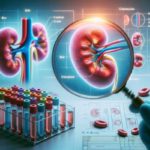In-Depth Analysis of Seasonal Affective Disorder Across the UK
What Is Seasonal Affective Disorder and How Does It Affect Individuals?

Seasonal Affective Disorder, referred to as SAD, is a distinctive type of depression that predominantly manifests during particular seasons, especially during the winter months when there is a significant reduction in natural sunlight. The primary catalyst for this condition is believed to be the diminished sunlight exposure, which disrupts the body’s internal circadian rhythm and affects serotonin levels—neurotransmitters that play a crucial role in mood regulation. Many individuals begin to notice indicators of SAD as autumn approaches, with symptoms often persisting well into winter, leading to emotional challenges that can profoundly impact daily life.
For a considerable number of people, the effects of SAD are more than just transient mood fluctuations; this disorder can severely hinder everyday activities, social interactions, and overall satisfaction with life. In regions like the UK, where winter days are notably shorter, the occurrence of SAD is remarkably higher, affecting various demographic groups in different ways. As awareness of SAD continues to evolve, recognising and addressing this condition has gained importance in the wider discourse on mental health.
What Is the Prevalence of SAD Within the UK Population?
Recent studies suggest that approximately 2 million individuals in the UK are impacted by some form of SAD, with the severity of symptoms ranging from mild to extremely severe. This condition affects millions during the colder months, particularly in northern regions like Scotland and certain areas of Northern England, where variations in light availability are more prominent.
Research indicates that women are disproportionately affected by SAD, as studies have shown they are more likely to develop this condition compared to men. However, while women generally report higher rates of incidence, men often experience more severe symptoms. Young adults are also considered to be at a heightened risk, potentially due to lifestyle influences and reduced exposure to natural light, particularly in urban settings. Understanding the prevalence of SAD in the UK is vital for developing effective support systems and treatment approaches that meet the diverse needs of various groups.
How Has Seasonal Affective Disorder Been Recognised and Studied in the UK?
The formal acknowledgment of SAD in the UK dates back to the 1980s, when researchers began to establish links between seasonal variations and mental health outcomes. Initial studies primarily concentrated on the physiological effects of light exposure on mood, paving the way for a greater understanding of this disorder. As insights into SAD have expanded, healthcare professionals have refined their skills in recognising symptoms and applying effective diagnostic criteria.
Over the decades, public and medical awareness regarding SAD has significantly increased, leading to enhanced treatment options. The advent of light therapy and various therapeutic approaches has marked a substantial advancement in the management of SAD. Currently, discussions surrounding SAD are progressing, emphasising the significance of early diagnosis and the creation of supportive environments for those affected by this condition.
Expert Perspectives on Managing Seasonal Affective Disorder

How Do Healthcare Professionals Diagnose Seasonal Affective Disorder?
The diagnosis of SAD is a comprehensive and intricate process undertaken by healthcare professionals in the UK. This evaluation considers the patient's symptoms along with their medical history. Key diagnostic criteria for SAD include the following:
- Occurrence of depressive symptoms during a specific season
- History of recurrent seasonal episodes
- Impact of symptoms on everyday activities
- Exclusion of other potential mental health disorders
Healthcare practitioners frequently employ structured questionnaires to assess the presence of depressive symptoms and their seasonal patterns, while also engaging in in-depth discussions about the patient’s medical background and lifestyle choices. For example, a general practitioner (GP) may inquire about the timing of symptoms, sleeping habits, and any family history of depression. This thorough approach is crucial for accurate assessments, enabling the provision of appropriate care and support for individuals affected by SAD.
What Are the Best Treatment Options Available for Managing SAD?
Experts in the UK recommend a comprehensive treatment strategy for SAD, ensuring that interventions are tailored to meet the unique needs of each individual. Effective treatment options typically encompass:
- Light therapy, using specially designed light boxes
- Antidepressant medications, particularly selective serotonin reuptake inhibitors (SSRIs)
- Cognitive Behavioural Therapy (CBT) aimed at cognitive restructuring
- Regular exercise and lifestyle changes
Light therapy is often the first-line treatment, especially for individuals exhibiting significant symptoms. By exposing patients to bright light that mimics natural sunlight, this therapy assists in regulating mood and alleviating symptoms associated with SAD. If light therapy alone does not yield satisfactory results, antidepressant medications may be prescribed to help restore balance among neurotransmitters in the brain. Furthermore, psychotherapeutic approaches like CBT aim to address negative thought patterns and develop healthier coping strategies, equipping individuals with a broader toolkit for effective symptom management.
What Are the Key Areas of Focus in Current Research on SAD in the UK?

Current research efforts in the UK are concentrating on broadening the understanding of SAD and enhancing treatment methodologies. A significant area of investigation is the biological mechanisms underlying this disorder, particularly how variations in light exposure can affect hormonal levels and neurotransmitter functionality. Recent studies are also delving into genetic predispositions, aiming to identify individuals who may be particularly vulnerable to developing SAD.
Additionally, innovative treatment modalities, including digital interventions and novel psychotherapeutic techniques, are being explored. Researchers are evaluating the effectiveness of mobile applications designed to support individuals with SAD, offering real-time feedback on mood fluctuations and light exposure. This evolving research landscape underscores a commitment to improving the quality of life for those affected by SAD through continuous innovation and exploration.
Identifying Symptoms and Diagnosing SAD in the UK
What Are the Typical Symptoms of Seasonal Affective Disorder?
Typical symptoms associated with SAD include persistent low mood, fatigue, and alterations in sleep patterns. Individuals may experience a sense of lack of motivation and social withdrawal, losing interest in activities that previously brought them joy. Additional symptoms may encompass irritability, concentration difficulties, and changes in appetite, which may lead to fluctuations in weight.
These symptoms generally surface in the autumn months, intensifying as winter advances. For many, the onset of spring brings about a gradual reduction of symptoms, which is a defining characteristic of SAD. Recognising these symptoms is crucial for effective intervention and management, as increased awareness can empower individuals to seek assistance before the condition severely disrupts their quality of life.
How Is Seasonal Affective Disorder Diagnosed in the UK?
The diagnosis of SAD in the UK necessitates a thorough evaluation of the patient's symptoms and their seasonal patterns. General practitioners employ a combination of clinical interviews, standardized questionnaires, and, when needed, consultations with mental health professionals to arrive at an accurate diagnosis.
Typically, GPs will seek evidence of a history of depressive episodes coinciding with specific seasons, particularly during winter. Screening tools may be utilised to gauge the severity of symptoms and assess their impact on daily life. By considering potential alternative mental health conditions, healthcare providers aim to ensure accurate diagnoses, paving the way for personalised treatment strategies.
What Sets SAD Apart from Other Forms of Depression?
SAD is uniquely defined by its seasonal pattern, distinguishing it from other forms of depression. While general depression can manifest at any time of the year, individuals suffering from SAD predominantly experience depressive episodes during certain seasons, typically winter. Unlike traditional depressive disorders, the symptoms of SAD often improve significantly as daylight hours increase in spring and summer.
This seasonal variability can create a misleading sense of normalcy during warmer months, as individuals may feel rejuvenated, only to face a resurgence of symptoms with the approach of winter. Understanding these distinctions is essential for both patients and healthcare providers, enabling the provision of appropriate treatment and support mechanisms tailored to the unique characteristics of SAD.
Which Populations Are Most Susceptible to Developing SAD in the UK?
Certain populations within the UK display a heightened susceptibility to developing SAD. Individuals residing in northern latitudes, where winter daylight is significantly limited, are at an elevated risk. Additional risk factors include a family history of depression, suggesting a possible genetic predisposition, alongside critical life stages such as young adulthood, when emotional and social pressures may peak.
Moreover, those with existing mental health conditions may find their symptoms exacerbated throughout the winter months. By identifying at-risk populations, healthcare systems can implement targeted outreach and preventative measures, aiming to alleviate the adverse impacts of SAD on vulnerable individuals.
Can Lifestyle Modifications Help Alleviate Symptoms of SAD?
Implementing lifestyle changes can be crucial in managing SAD symptoms effectively. Increasing exposure to natural sunlight—whether through outdoor activities or by adjusting workspaces to be near windows—can substantially reduce depressive symptoms. Regular physical exercise is also advantageous, as it promotes the release of endorphins, enhancing mood and energy levels.
Additionally, maintaining a balanced diet rich in essential nutrients, especially those that support brain health, can provide further relief from symptoms. Foods high in omega-3 fatty acids, vitamin D, and B vitamins are particularly beneficial. Simple adjustments, such as planning outdoor walks during daylight hours and nurturing social connections, can also offer critical support and improve overall well-being, making lifestyle changes an integral component of managing SAD.
Investigating Effective Treatment Approaches for SAD in the UK
How Does Light Therapy Work in the Treatment of SAD?
Light therapy has emerged as a fundamental treatment for SAD, particularly in the UK. This therapeutic approach involves exposure to a light box that simulates natural outdoor light, typically requiring sessions lasting around 20 to 30 minutes each morning during the winter months. The brightness of these light boxes usually reaches approximately 10,000 lux, significantly exceeding standard indoor lighting levels.
The underlying mechanism of light therapy hinges on its ability to influence the body's circadian rhythm and serotonin production, both of which are often disrupted in individuals suffering from SAD. By replicating the spectrum of natural sunlight, light therapy can effectively assist in regulating mood and alleviating depressive symptoms. Many patients report noticeable improvements within days or weeks of consistent use, making this treatment a popular and effective option for managing SAD.
What Medications Are Available for Treating Seasonal Affective Disorder?
In instances where light therapy alone proves inadequate, healthcare professionals may suggest antidepressant medications, particularly selective serotonin reuptake inhibitors (SSRIs). These medications function by restoring balance among key neurotransmitters in the brain, primarily serotonin, which is often found to be deficient in individuals with SAD.
The selection of medication is generally personalised, taking into account the individual’s medical background, symptom severity, and any previous reactions to antidepressants. Close monitoring during the initial treatment phases is vital, as adjustments may be necessary to ensure optimal effectiveness while minimising potential side effects for the patient.
Which Psychotherapeutic Approaches Are Commonly Employed for SAD?
Psychotherapy, particularly through the framework of Cognitive Behavioural Therapy (CBT), is a widely accepted method for addressing SAD. CBT concentrates on identifying and altering negative thought patterns and behaviours that contribute to depressive symptoms. Through structured sessions, patients learn to develop effective coping mechanisms and challenge unhelpful thinking patterns.
Therapists may also introduce behavioural activation strategies, encouraging patients to engage in activities that elicit positive emotions. By fostering a proactive approach to symptom management, CBT can empower individuals to take control of their mental health, establishing it as a vital component of a comprehensive treatment strategy for SAD.
Making Lifestyle Changes to Manage SAD in the UK
What Importance Do Diet and Exercise Have in Managing SAD?
Diet and exercise are critical elements in effectively managing symptoms associated with SAD. A balanced diet, abundant in omega-3 fatty acids, vitamin D, and complex carbohydrates, can significantly enhance overall mental health and stabilise mood. Foods such as fatty fish, nuts, seeds, and whole grains are particularly advantageous in this context.
Regular physical activity provides multifaceted benefits, including the release of endorphins, which improve mood and elevate energy levels. Exercise can also act as a natural remedy for stress and anxiety, commonly experienced alongside SAD. Establishing a consistent exercise routine, even if it consists of simple daily walks, can markedly alleviate the burden of symptoms, positively influencing overall mental health.
Why Is Sunlight Exposure Crucial for Managing SAD?
Maximising access to natural sunlight is essential for individuals dealing with SAD. Even on cloudy days, exposure to daylight can offer significant psychological benefits. Engaging in outdoor activities, such as walking or gardening, can uplift mood and foster a sense of connection with the environment.
Incorporating brief breaks throughout the day to step outside, particularly around midday when natural light is most abundant, can greatly enhance mental well-being. For those unable to access sufficient natural light, light therapy can serve as a valuable adjunct, ensuring the essential light exposure necessary for effective mood regulation.
What Advantages Do Social Activities Offer in Managing SAD?
Participating in social activities can significantly alleviate the effects of SAD. Engaging with friends, family, or community groups provides emotional support and fosters a sense of belonging, which can counteract the isolation often experienced by individuals affected by this disorder.
Involvement in activities such as joining clubs, attending local events, or simply organising regular gatherings with friends can provide invaluable distractions from negative thoughts. During the winter months, when symptoms may worsen, maintaining these social connections is particularly vital. Establishing a supportive social network can bolster resilience and cultivate a more positive outlook, ultimately benefiting those managing SAD.
- Joining a local walking group
- Participating in community projects
- Engaging in team sports or classes
- Volunteering for charitable organisations
- Organising game nights with friends
- Taking art or cooking classes
- Attending book clubs or discussion groups
- Exploring local museums or galleries
Research-Based Insights into Seasonal Affective Disorder
What Effect Does Early Diagnosis Have on Outcomes for SAD?
Early diagnosis of SAD is essential for enhancing treatment outcomes and the overall management of the condition. Promptly recognising symptoms enables healthcare providers to implement interventions before the disorder significantly disrupts daily functioning and mental health.
Timely treatment can prevent symptoms from worsening, thereby reducing the chances of more severe depressive episodes in subsequent years. Moreover, early intervention promotes a proactive approach, allowing individuals to cultivate coping strategies and resilience against future seasonal challenges they may encounter.
What Long-Term Advantages Can Consistent Treatment Provide?
Engaging in consistent treatment for SAD can lead to significant improvements in the frequency and intensity of depressive episodes. By committing to regular therapeutic practices—whether through light therapy, medication, or psychotherapy—individuals may experience a reduction in the severity of their symptoms over time.
Additionally, long-term treatment can assist in managing concurrent mental health conditions, such as anxiety disorders, which frequently accompany SAD. Addressing these interconnected issues enables individuals to attain a more stable mental state, improving their overall quality of life and enhancing their well-being.
How Can Understanding SAD Improve Quality of Life?
Gaining a thorough understanding of SAD empowers individuals to take proactive measures in managing their condition. Increased education about the disorder fosters awareness, diminishes stigma, and encourages affected individuals to seek assistance. By comprehending the nature of SAD, individuals can identify symptoms early, adhere to treatment plans, and implement lifestyle changes that positively impact their overall well-being.
Furthermore, those well-informed about SAD frequently report enhanced mood and energy levels as they develop effective coping mechanisms. This empowerment can lead to a more fulfilling life, enabling individuals to engage fully with their personal and professional commitments, irrespective of the seasonal challenges they face.
Practical Strategies for Coping with SAD in the UK
What Are the Most Effective Coping Strategies for Managing SAD?
Implementing effective coping strategies for SAD is crucial for individuals aiming to manage their symptoms successfully. Establishing and adhering to a consistent sleep schedule is vital, as sleep disturbances can exacerbate depressive symptoms and overall mental wellbeing.
Incorporating mindfulness and relaxation techniques, such as meditation or yoga, can profoundly enhance emotional regulation. Engaging in enjoyable hobbies, including reading, crafting, or playing music, provides a therapeutic outlet and distracts from negative thoughts. Collectively, these coping techniques create a robust framework for managing SAD symptoms and strengthening emotional resilience.
How Can Family and Friends Support Someone Experiencing SAD?
Family and friends play a pivotal role in supporting individuals dealing with SAD. Their understanding and compassion can significantly alleviate feelings of isolation and despair that frequently accompany this disorder. Encouraging loved ones to participate in social activities, providing emotional support, and being empathetic listeners can greatly influence their recovery journey.
Creating a nurturing environment free from judgement allows those affected to express their feelings and seek help without fear. Family members can also assist in identifying symptoms and motivating adherence to treatment. By fostering open communication, loved ones can enhance treatment effectiveness and support the overall recovery process.
What Resources Are Available for Individuals Coping with SAD in the UK?
In the UK, numerous resources exist for individuals grappling with SAD. The National Health Service (NHS) provides access to mental health services, including assessments and treatment options tailored to individual needs. Additionally, many charitable organisations, such as Mind and Samaritans, offer invaluable support, helplines, and informative materials to assist those affected by SAD.
Support groups, both in-person and online, provide platforms for individuals to connect, share experiences, and gain insights into managing SAD. These resources are instrumental in fostering a sense of community and understanding, especially during challenging winter months.
How Does Light Therapy Contribute to Managing SAD?
Light therapy is recognised as one of the most effective treatments for SAD, particularly for individuals experiencing severe seasonal symptoms. This therapy involves using a light box that emits bright light, simulating natural daylight and helping to regulate mood and alleviate symptoms associated with SAD.
Regular sessions of light therapy can effectively boost serotonin levels, enhance mood, and alleviate symptoms related to SAD. Many patients report significant improvements within weeks of commencing treatment, making it a preferred choice for those aiming to manage their condition effectively during the winter months.
What Lifestyle Modifications Can Help Reduce Symptoms of SAD?
Adopting lifestyle modifications can have a substantial impact on alleviating SAD symptoms. Establishing a routine that incorporates regular exercise, balanced nutrition, and sufficient sleep is vital for promoting overall wellbeing and mental health.
Engaging in outdoor activities, even on cloudy days, can increase exposure to natural light, further supporting mood regulation. Maintaining social connections and participating in social activities can also provide critical emotional support and distraction from depressive feelings. These adjustments not only assist in managing symptoms but also promote a healthier, more fulfilling lifestyle overall.
Established Strategies for Understanding Seasonal Affective Disorder
How Does Education About SAD Facilitate Better Understanding?
Educating individuals about SAD can significantly elevate awareness and diminish the stigma associated with mental health issues. Greater awareness empowers those affected to seek help while fostering understanding among family and friends, ultimately creating a supportive environment.
Education also plays a critical role in improving early intervention rates. When individuals recognise symptoms linked to SAD, they are more likely to pursue effective treatment options before their condition worsens. By emphasising the importance of mental health and available resources, education can enhance the quality of life for those living with SAD.
What Best Practices Should Be Followed for Managing SAD?
Best practices for managing SAD encompass a holistic approach that includes light therapy, medication, psychotherapy, and lifestyle changes. By integrating these strategies, healthcare providers can formulate tailored treatment plans that cater to individual needs and preferences.
Regular follow-ups with healthcare professionals ensure that treatment remains effective and any necessary adjustments can be made. Consistent engagement in therapeutic practices fosters resilience, empowering individuals to navigate seasonal challenges with greater ease and confidence.
How Can Employers Support Employees Dealing with SAD?
Employers play a crucial role in supporting employees affected by SAD. Implementing flexible working hours can enable individuals to better manage their work-life balance, especially during periods when symptoms may be more pronounced. Providing access to natural light in the workplace, through strategic window placements or light therapy tools, can greatly enhance employee wellbeing.
Furthermore, fostering an open dialogue about mental health within the workplace creates an environment where employees feel comfortable seeking support. Offering employee assistance programmes that include mental health resources can further enhance workplace support for those dealing with SAD, demonstrating a commitment to employee health and wellbeing.
What Role Does Diet Play in Managing Symptoms of SAD?
Diet plays a vital role in managing symptoms associated with SAD. A balanced diet, rich in essential nutrients, is crucial for supporting overall brain health and mood regulation. Foods high in omega-3 fatty acids, such as fish and nuts, are particularly beneficial.
Incorporating vitamin D-rich foods, especially during the darker months, can also prove advantageous, as deficiencies in this vitamin are linked to mood disorders. Prioritising nutrient-dense meals can lead to improved energy levels and emotional resilience, offering a holistic approach to managing SAD effectively.
How Can Social Support Alleviate Symptoms of SAD?
The presence of strong social support can significantly reduce the symptoms of SAD. Friends, family, and support groups provide not only emotional comfort but also practical assistance, helping individuals feel less isolated in their struggles. Engaging with others can furnish essential distractions from negative thoughts while fostering a sense of belonging.
Participating in group activities or seeking social connections cultivates a support network that is crucial for emotional wellbeing. This social engagement not only mitigates feelings of loneliness but also encourages individuals to adhere to treatment plans and maintain a positive outlook, which contributes to their overall mental health.
Future Directions for Research and Treatment of SAD in the UK
What Innovative Treatments Are Currently Being Explored?
The treatment landscape for SAD is continually evolving, with new therapies under investigation. Current research focuses on advanced light therapy devices that offer more personalised treatment options, adapting exposure based on individual preferences and needs.
Additionally, novel pharmacological interventions are being developed, concentrating on targeting the unique biological mechanisms underlying SAD. These innovations aim to enhance treatment efficacy while providing alternatives for individuals who may not respond favourably to traditional therapies.
How Is Technology Being Employed to Combat SAD?
Technology is playing an increasingly significant role in addressing SAD. Mobile applications designed for mood tracking and symptom management are gaining traction, enabling individuals to monitor their emotional health and receive tailored support.
Wearable devices that track light exposure and physical activity can also offer valuable insights, assisting users in adjusting their routines to manage symptoms more effectively. As technology continues to advance, these tools have the potential to enrich the overall treatment experience, making care more accessible and effective for those affected by SAD.
What Role Will Public Awareness Play in the Future of SAD?
Public awareness is fundamental for the future management of SAD. Greater understanding of the disorder can facilitate earlier diagnosis, improve access to treatment, and reduce the stigma surrounding mental health issues.
Educational initiatives that inform the public about symptoms and available resources can empower individuals to seek help and support others within their communities. As awareness increases, it can catalyse further research and funding, ultimately enhancing the quality of care for those living with SAD.
How Can Policy Changes Enhance Care for Individuals with SAD?
Policy changes are essential for improving care for individuals with SAD. Increasing healthcare funding specifically allocated for mental health services can enhance access to treatment options and resources for those affected.
Moreover, integrating mental health care into primary care settings can facilitate more comprehensive support for individuals suffering from SAD. These policy shifts can pave the way for improved awareness and accessibility, ultimately benefiting patients and the healthcare system as a whole.
What Are the Advantages of Multidisciplinary Approaches to SAD Treatment?
Multidisciplinary approaches to SAD treatment hold considerable promise for enhancing outcomes. By integrating expertise from psychology, psychiatry, and nutrition, healthcare providers can formulate comprehensive care plans that address the multifaceted nature of the disorder.
This collaborative effort can lead to more personalised treatment strategies, thereby improving the effectiveness of interventions. Furthermore, this holistic approach fosters a deeper understanding of SAD, ultimately enhancing the wellbeing of affected individuals.
Frequently Asked Questions Regarding Seasonal Affective Disorder
What Is Seasonal Affective Disorder?
Seasonal Affective Disorder (SAD) is a type of depression that occurs at specific times of the year, typically during the winter months, due to reduced exposure to sunlight.
What Symptoms Are Commonly Associated with SAD?
Symptoms of SAD include persistent low mood, fatigue, changes in sleep patterns, irritability, and a diminished interest in activities that once provided joy.
How Is SAD Diagnosed by Healthcare Professionals?
Diagnosing SAD involves a thorough evaluation of a patient’s symptoms and their seasonal patterns, generally conducted through questionnaires and clinical interviews by healthcare professionals.
What Treatment Options Are Available for Managing SAD?
Treatment for SAD includes light therapy, antidepressant medications, and psychotherapy, with a particular emphasis on Cognitive Behavioural Therapy (CBT).
Can Lifestyle Changes Help in Managing Symptoms of SAD?
Yes, lifestyle changes such as regular exercise, increased exposure to natural light, and maintaining a healthy diet can significantly alleviate symptoms of SAD.
Who Is Most Vulnerable to Developing SAD?
Individuals living in northern latitudes, those with a family history of depression, and young adults are often at greater risk of developing SAD.
What Role Does Light Therapy Play in Treating SAD?
Light therapy involves exposure to bright artificial light that simulates natural sunlight, helping to regulate mood and alleviate symptoms associated with SAD.
How Can Family and Friends Support Someone Struggling with SAD?
Family and friends can provide emotional support, encourage participation in social activities, and create a nurturing environment for those experiencing SAD.
What Resources Are Accessible for Individuals with SAD in the UK?
The NHS, along with various mental health charities, provides resources such as helplines, support groups, and informational materials tailored for those affected by SAD.
What Does the Future of Research and Treatment for SAD Look Like?
Future research on SAD aims to explore advanced treatments and the role of technology in managing symptoms, ultimately enhancing overall care for those impacted by this condition.
Connect with us on Facebook!
The Article Understanding Seasonal Affective Disorder: UK Insights Was First Published On https://acupuncture-frome.co.uk
The Article Seasonal Affective Disorder: Insights for the UK Was Found On https://limitsofstrategy.com

